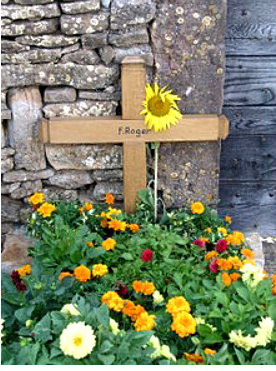|
|
August 26, 2015 Chris McDonnell, UK Roger of Taize May
1915 – August 2005 (Comments welcome here)
|
chris@mcdonnell83.freeserve.co.uk
|
|
|
August 26, 2015 Chris McDonnell, UK Roger of Taize May
1915 – August 2005 (Comments welcome here)
|
chris@mcdonnell83.freeserve.co.uk
|
It
is ten years since Brother Roger, founder of the Taize community, was murdered
at evening prayer on August 16th 2005. His sudden death shocked not
only his immediate community but a far wider circle of people who had come to
faith and an appreciation of prayer through his influence.
What
a jewel Taize has become in the midst of secular
‘Part
of his appeal may have been his dislike of formal preaching, while encouraging a
spiritual quest as a common endeavor. During a Taizé gathering in
Beyond
Taize, through words and music, we have been able to share in an understanding
of the Lord that has touched many in a profound and meaningful way. A selection
of Taize music and chants can be found at:
https://www.youtube.com/watch?v=FRrYRORosgo&list=PLAFC3BF61F242A1C6
Brother
Roger devoted his life to ecumenism in a lived way. He was a man formed by his
early protestant upbringing.
In 1980, during a European Meeting in
‘I
have found my own identity as a Christian by reconciling within myself the faith
of my origins with the mystery of the Catholic faith, without breaking
fellowship with anyone.’
His
reception of the Eucharistic Christ is well documented. It was a natural
continuation of his personal search for a Christian unity where the intention
and understanding over-rides rules, seeking a deeper faith that is life-giving.
According
to Cardinal Walter Kasper this was accomplished as though there was a tacit
understanding between Brother Roger and the Catholic Church "crossing
certain confessional" and canonical barriers through what Brother Roger
called a gradual enrichment of his faith with the foundations of the Catholic
Church including "the ministry of unity exercised by the bishop of
The
forthcoming Synod would do well to be reminded of his example.
In
remembering his life we too should follow his practice of meditative prayer.
